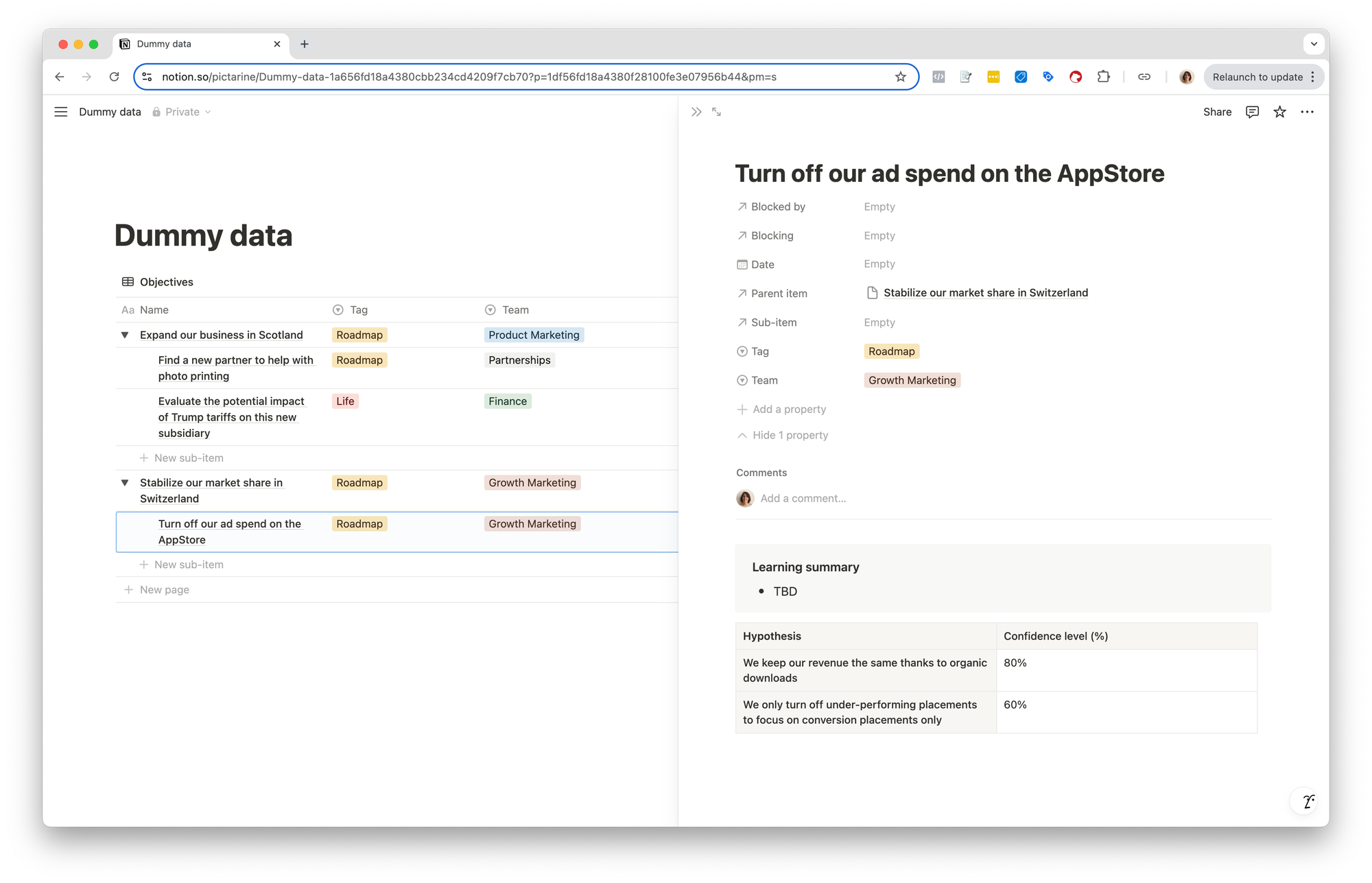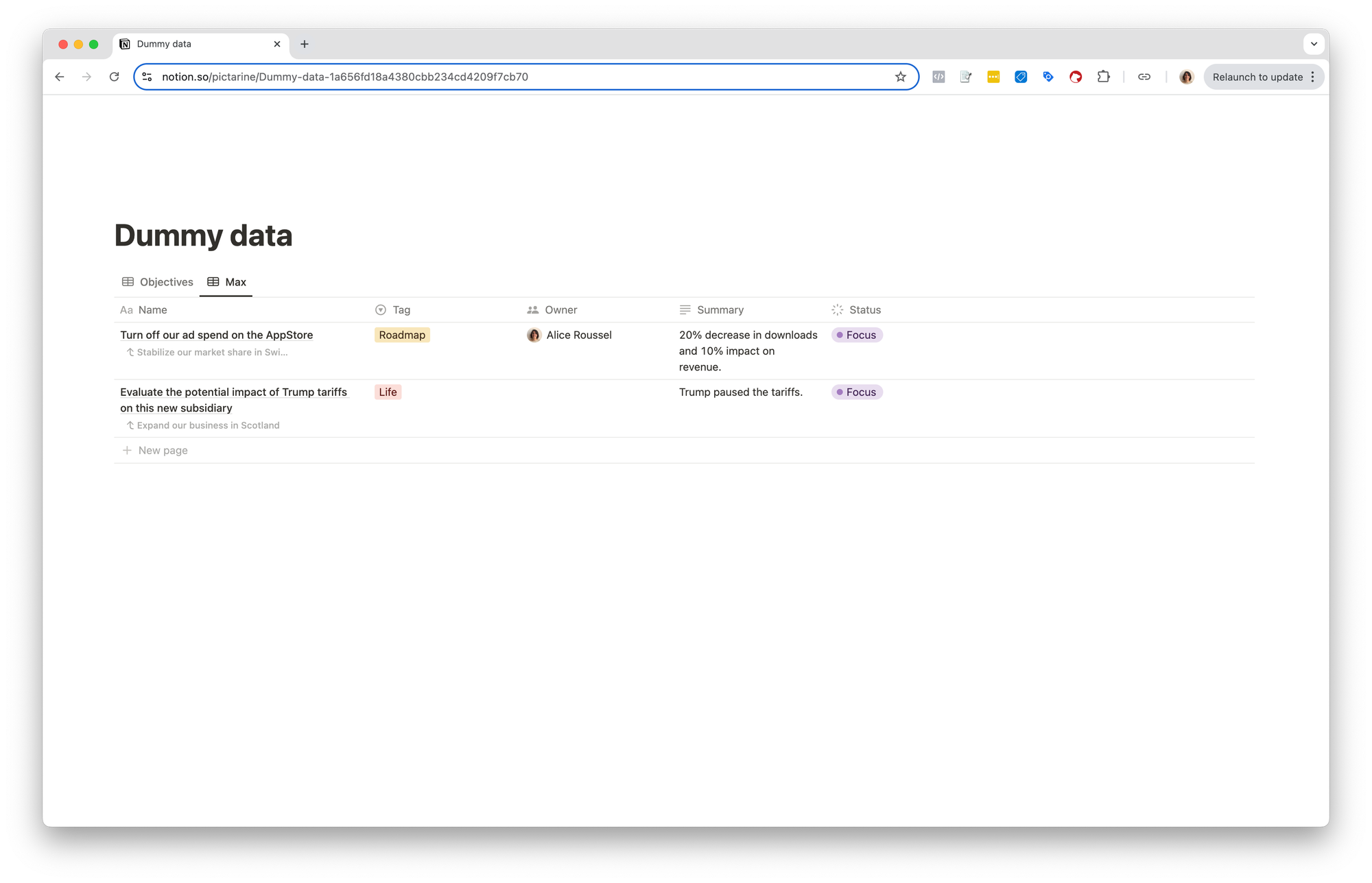Roadmap resilience: running operations under uncertainty
On working with hypotheses, confidence levels, and timeframes that make sense.

I'm starting a series of articles about what I personally refer to as "Operations": not IT ops but the behind-the-scenes of how we work: how we set direction, align across teams, and move forward when things are uncertain.
I'm not good at building a roadmap, especially when it comes to build a one-year roadmap. I’ve tried every structure and format you can imagine. I’ve built beautiful slide decks with quarterly milestones and themes. But every time, something always derails it. I once planned a massive content overhaul across app stores. Then, halfway through Q1, our ranking changed. Traffic dipped. We had to drop everything and shift focus. That roadmap item? Abandoned.
What I’ve learned
I do know where I want my team to go, but I’ve stopped pretending I can predict how we’ll get there over the course of next year. So instead of a fixed roadmap, I work with what I call a hot topics roadmap: a rolling list of priorities we care about right now. It’s not about the perfect plan. It’s about making progress and staying relevant.
Roadmap vs. Life tags
At the end of each year, each marketing manager has to wrap up a list of key topics we want to focus on for the year ahead based on the company priorities. Our CMO also shares department-wide focus areas. But once the year begins, reality kicks in.
Over time, I became used to tag items either "roadmap" or "life":
- Roadmap: what we planned for.
- Life: what hits us out of nowhere and ends up mattering more.
Ironically, the most impactful work we’ve done often came from the "life" tags. A competitor launch. A technical failure. A new opportunity we didn’t see coming. "Life" forced us to adapt fast and creatively. That’s why we make space for it.
We track both tags inside Notion. It’s a simple property field but it helps in two ways:
- Prioritisation: helps the team know what’s fixed vs. flexible.
- Visibility: gives leadership a clearer view of what’s really going on: not just what we planned, but what we’re responding to in real time.

Confidence levels as a decision tool
This idea came from an unexpected place: a TV show called Departures. Investigators mapped every transport crash theory with a confidence level. Nobody knew for sure. But when one teammate gave a 10% and another 80%, the tension sparked clarity. That’s when I realised: confidence isn’t about being right, it’s a way to surface uncertainty.
So I brought it into my own team.
We now assign a confidence level to every item on our roadmap. Not to predict the future but to start the right conversations. We ask:
- How sure are we this will work?
- What’s the evidence behind that?
- What would make us more (or less) confident?
Turns out that it works!

We use three tiers:
- Low (0–40%): hypothesis with limited evidence. Needs exploration.
- Medium (40–70%): some evidence or past experience, but unknowns remain.
- High (70–100%): strong conviction backed by data, results, or a strong conviction backed by industry context.
In our Q1 roadmap, we had a topic labeled "Optimize referral flows" with a 40% confidence level. Why? Because we weren’t sure how much impact it could still drive, or whether we’d have disposability from the engineering team. But seeing it marked low confidence opened up a real discussion: should we test something small now or shelve it completely?
The value of this system:
- It gives ICs a clear voice. You don’t have to be right, you just have to share your logic as well as your convictions.
- It helps teams build shared conviction and not blind consensus.
- It improves buy-in. C-levels don’t need certainty. They need context.
How we use it
Here’s how we make hypothesis and confidence levels work:
- The roadmap is updated in real-time in Notion and discussed during weekly meetings.
- The topic owner assigns an initial confidence level before launch.
- Others are encouraged to challenge it, especially if they have different expertise or levels of seniority.
- We don’t update confidence levels mid-project. But we do adjust milestones and timelines based on what we learn.
- We use it most in early discussions. When people skip it, we’ve seen overconfidence or false consensus lead to wasted work.
How leadership use it
Since we use the same roadmap at the company level, we use properties like Team in Notion to filter initiatives by department. On the Marketing homepage, for instance, all items owned by the team are automatically listed.
Maxime, our CMO and co-founder, has a dedicated view that gives him real time information he needs to know:
- Topics we are currently focusing on, broken down by owner.
- A short summary highlighting our latest learnings.
If Maxime wants to dig deeper, he simply opens the item. There he can read the underlying hypotheses, see our confidence levels, and track progress through key milestones. He gets a clear picture of where we’re learning, struggling, or at risk of dropping the ball.
This means he doesn’t need a meeting to understand where we’re at. The system speaks for itself.

Adoption is the hard part
Let me be clear: this system didn’t land smoothly with everyone. Some teammates told me that setting hypotheses and confidence levels felt unnatural, even forced.
Functions like legal, brand, or partnerships often deal with ambiguity. Success depends more on alignment, timing, or external signals than experiments. That doesn’t mean confidence levels are useless, it just means they need to be adapted.
We’ve used them in brand campaigns, for example, to gauge stakeholder buy-in or narrative risk. In partnerships, we’ve tagged initiatives based on conviction in the partner’s reliability.
You don’t need to quantify the unquantifiable. You just need to say: "here’s how sure I am, and why".
We’re not looking for accuracy; we’re looking for alignment.
That’s why we treat confidence as a conversation, not a score in itself. You don’t need a spreadsheet to back up your gut feeling. You just need a point of view and the willingness to explain it.
Confidence levels don’t force precision. They surface ambiguity. And ambiguity is something you can act on together.
In fact, some of the best debates we’ve had came from non-technical roles pushing back on what others assumed was "obvious". Those moments created shared clarity, which is ultimately the goal.
Final thoughts
We’ve had 30% vs. 90% debates that made our strategy stronger. Not because someone was "right" but because we saw things more clearly.
The "hot topics roadmap" is not a magic framework. It helps us move through uncertainty with more honesty, fewer illusions, and stronger alignment.
I’m still figuring this out. But I already know it’s better than pretending we can script the year in advance.
In uncertain environments, transparency and alignment beat certainty every time. It's okay not to control everything.